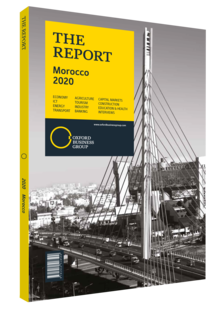Industrial policy measures boost Morocco's textile industry
With a long tradition in leather and garment manufacturing, textiles is one of Morocco’s most important industries, accounting for 15% of industrial GDP, according to the Moroccan Association of the Textile and Apparel Industries (Association Marocaine des Industries du Textile et de l’Habillement, AMITH). While textiles and garments have grappled with periods of crisis, broad industrial policy measures are helping to relaunch the industry.
New Dynamic
Under the umbrella of the Industrial Acceleration Plan (Plan de d’Accélération Industrielle, PAI) 2014-20, textiles representatives signed an agreement with the authorities in 2015 to revamp the industry with a focus on product design, the development of local brands and enhanced competitiveness. “The PAI encouraged companies to help suppliers move up the value chain and improve their products in exchange for government support,” Fatima Zahra Alaoui, acting general manager of AMITH, told OBG. The plan also stipulated closer cooperation with the Office of Vocational Training and Employment Promotion, which oversees the state’s professional training programmes.
AMITH has long been working to facilitate the transfer of skills in knowledge. In 2008 it partnered with the government to establish the Casa Moda Academy, a sector-specific training school that offers professional licences. By focusing on the training of human resources, the facility aims to improve the design and quality of textile output.
The benefits from the agreement are already evident. By 2018 investment in the sector reached Dh4bn ($416.7m) up from the Dh300m ($31.3m) in annual investment before the signing of the agreement, according to figures provided by AMITH.
It will be important looking into the future for producers to take advantage of the country’s comparative advantages. “We not only have a competitive proximity to European markets, we also have a great level of flexibility,” Alaoui told OBG. “This is important because as fashion cycles are getting shorter and shorter, Moroccan manufacturers can respond quickly to changing preferences.”
Key Partner
The EU is the main destination market for the kingdom’s textiles. Between 2016 and 2018 the value of Moroccan textile exports to the bloc increased from €2.7bn to €2.9bn, according to AMITH. Although the kingdom is the eighth-largest supplier of textiles to the EU globally, it ranks second in the Mediterranean basin, coming after only Turkey, which exported €14.6bn worth of textiles to the European bloc in 2018.
Moroccan producers have traditionally focused on southern Europe, but are increasingly looking further abroad for customers. “Markets like Spain and France are not very dynamic,” Alaoui told OBG. “Northern Europe is becoming more commercially attractive, and we are working to expand the presence of Moroccan textiles in these markets.”
The Next Step
To be able to compete on a global scale, producers are keen to position the country as a sustainable textiles manufacturer. “We must embrace sustainability,” Alaoui explained. “Customers are demanding environmentally conscious practices, and manufacturers need to adapt and comply.”
The kingdom is also looking for partnerships to help the country adopt new technologies and advance textiles manufacturing. In November 2018 the Ministry of Industry, Investment, Trade and the Digital Economy signed an agreement with the Swiss government that included technical assistance and a Dh13m ($1.4m) package aimed at improving the performance of small and medium-sized enterprises (SMEs) in the textiles industry over the 2019-21 period. The investment, of which Dh11.7m ($1.2m) will be financed by the Swiss Secretariat for Economic Affairs and the remaining Dh1.3m ($135,000) by the Moroccan government, will support 25 SMEs.
You have reached the limit of premium articles you can view for free.
Choose from the options below to purchase print or digital editions of our Reports. You can also purchase a website subscription giving you unlimited access to all of our Reports online for 12 months.
If you have already purchased this Report or have a website subscription, please login to continue.

